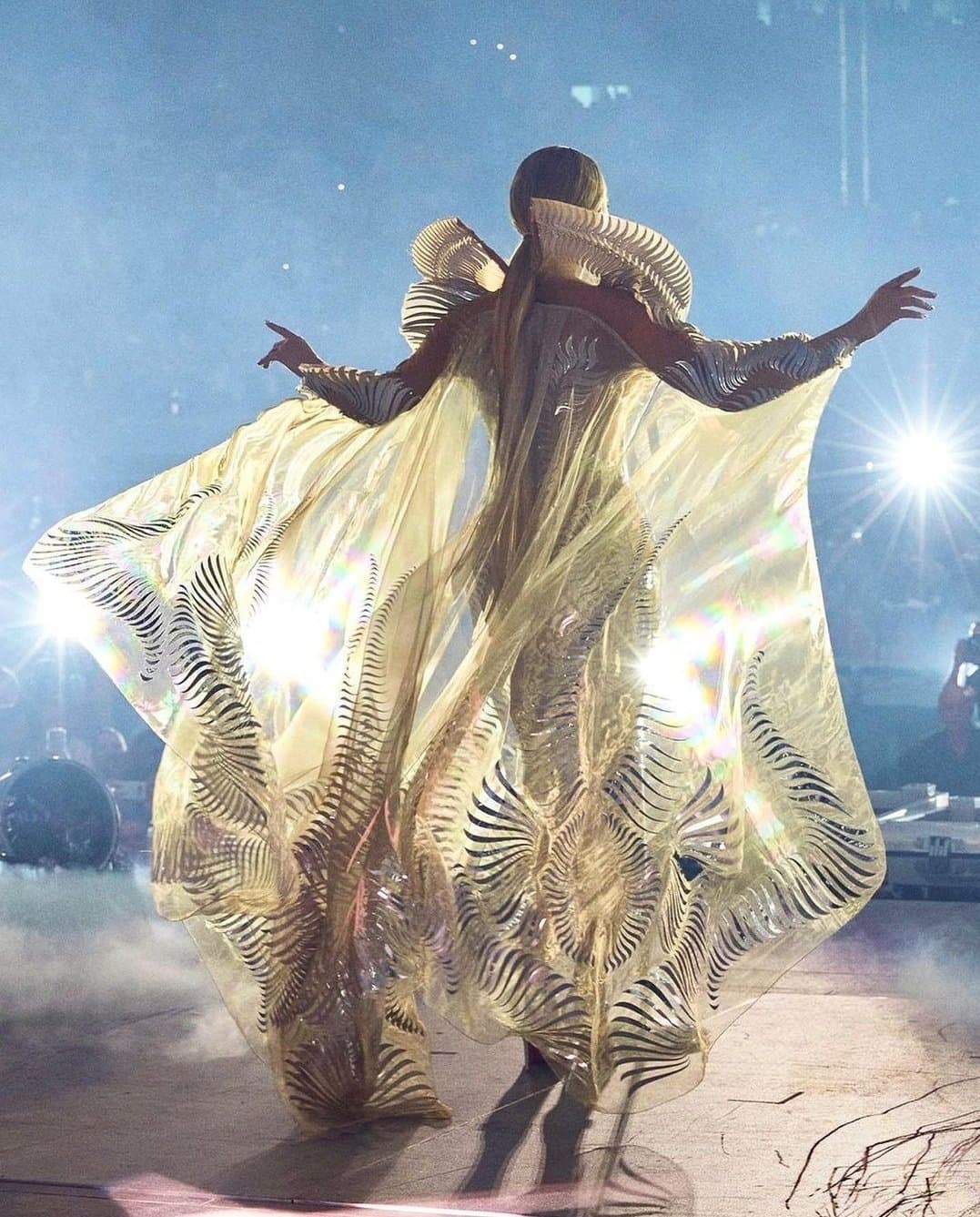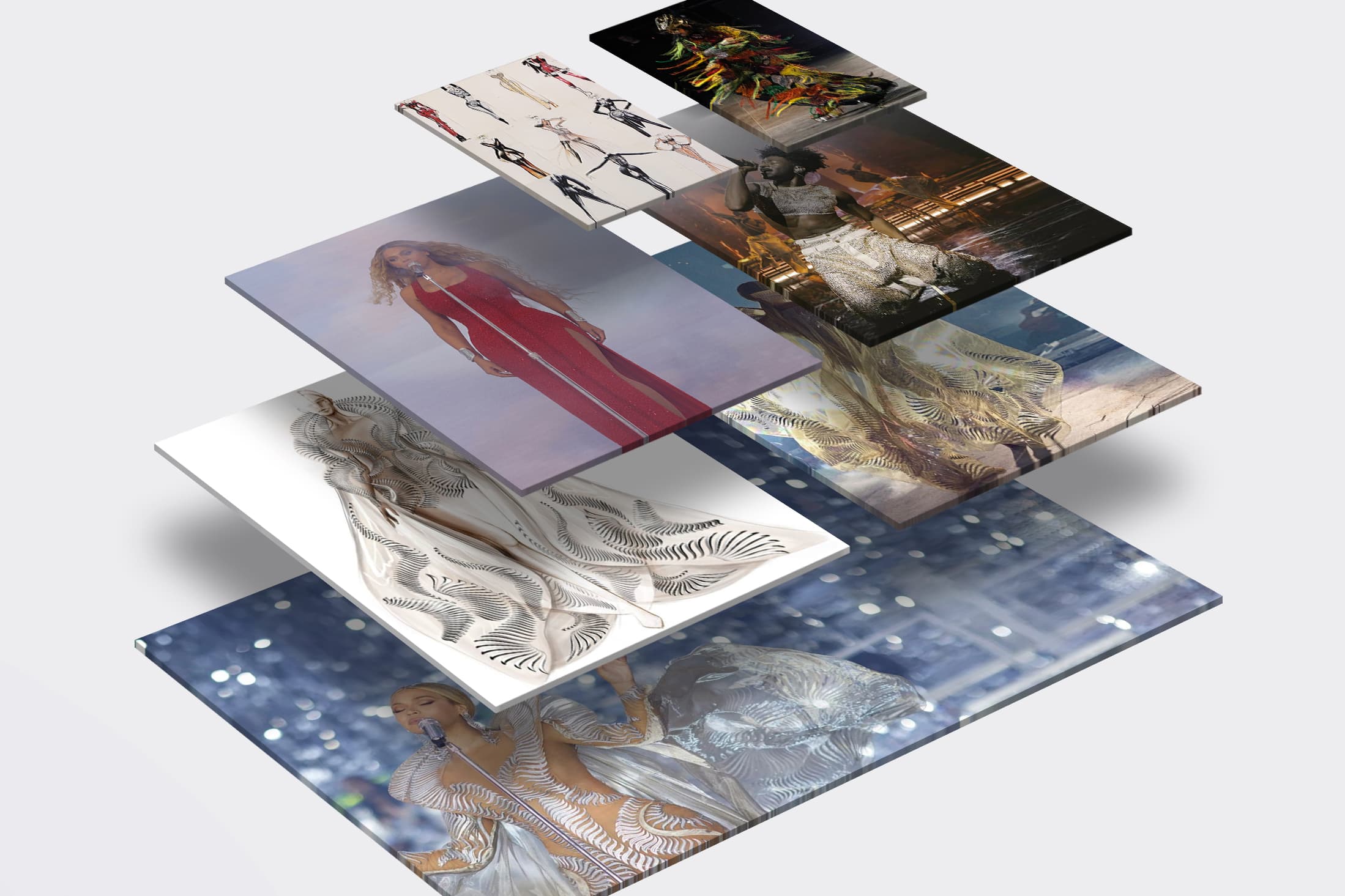How Partnerships on Tour Outfits for Music Superstars Makes for Much More Than a Brand Ambassadorship
By Mark Wittmer
Pop music and fashion have always gone hand in hand – when we think about the biggest names that have come to define pop culture, their image and style (both onstage and offstage) instantly pops into our head alongside their big hits.
As if to signal that we are finally over the Covid pandemic hangover, this year is shaping up to be a huge year for pop stars and their massive arena concerts, with the likes of Beyoncé, Harry Styles, Taylor Swift, and Madonna embarking on huge stadium tours and bringing plenty of fashion theatricality along with them.
This dialogue between fashion and music, of course, offers a lot of exciting opportunities for collaboration, brand ambassadorship, and media impact. Here we’ll look at a few ways that these relationships between top luxury brands and music stars are unfolding, as well as exploring some further opportunities.
Key Takeaways
More than a brand ambassador: These kinds of partnerships with musicians and performers create a more resonant impact than red carpet dressing or celebrity ad campaigns in that they are tied into a meaningful cultural narrative and artistic expression.
Who are you wearing, who’s wearing you? Leaning into these moments of collaborative connection, brands and musicians form symbiotic relationships wherein they mutually amplify each other’s message and identity.
Every costume change counts: Social media has further amplified the multidisciplinary spectacle of stadium concerts, making dance, fashion, and theatricality come further into focus as it lives both onstage and as digital content across the internet.


Partnerships with musicians and performers create a more resonant impact than red carpet dressing or celebrity ad campaigns in that they are tied into a meaningful cultural narrative and artistic expression.
One of the most musically and visually distinctive artists working today, Björk has set a high-water mark for creating a multidisciplinary, multi-channel creative world. From teaming up with fashion photographers to create her album artwork to championing some of today’s most visionary designers through her avant-garde tour outfits, which both fit perfectly into her lavish and strange visual world while firmly grounding her in the world of contemporary fashion and art.
She’s also accompanied her album releases with interactive digital projects like musical apps and specially designed visual websites, expanding on a broad and deep creative world that any creative would be honored to be a part of.
One year after taking over as creative director for Dior Homme, Kim Jones’ visibility at the house got a big boost when he designed tour outfits for K-Pop stars BTS. Dior just recently announced Jimin of BTS as a brand ambassador, bringing the partnership full circle and solidifying Dior’s creative connection with one of the biggest music acts in the world.

Leaning into these moments of collaborative connection, brands and musicians form symbiotic relationships wherein they mutually amplify each other’s message and identity.
One of the strongest ongoing relationships we’ve seen between one brand and one musician is that between Coach and Lil Nas X. Coach has made strong moves to position its brand ambassadors – which range from young TikTok stars to established icons like Jennifer Lopez – as members of an extended family, while also connecting this practice with a vocal and visible championing of inclusion and queer identity. Lil Nas X’s relationship with the brand checks all these boxes; he’s appeared in campaigns, co-designed a capsule collection, and worn custom outfits designed by creative director Stuart Vevers on his recent world tour.


While for Beyoncé’s Renaissance tour a better question might be who are you not wearing – each show includes a whopping number of outfit changes, with new looks from new designers being constantly introduced at each date throughout the tour – these looks are carefully handpicked by Beyoncé and stylist Shiona Turini to further the show’s aesthetic spectacle of maximum glam and messaging of powerful Black womanhood, with a few outfits taking on special meaning in their connection to the time and place of the performance.

For a show in Amsterdam that fell on Juneteenth, the singer wore looks exclusively from Black designers, including Maximilian Davis for Ferragamo, Olivier Rousteing for Balmain (with whom she has collaborated previously), Ib Kamara for Off-White, and more – as well as a look from her own label, Ivy Park.
Other dates saw Beyoncé lean into the location of the concert, like wearing Vivienne Westwood during her performance in London, Jacquemus in Marseille, or a custom Iris van Herpen gown for her first date in Amsterdam.
Social media has further amplified the multidisciplinary spectacle of stadium concerts, making dance, fashion, and theatricality come further into focus as it lives both onstage and as digital content across the internet.



Like all pop stars playing elaborate stadium concerts today, Beyoncé and her Renaissance tour are deeply indebted to one ground-breaking star: Madonna. The legendary pop star’s 1990 Blond Ambition tour was deeply influential in its combination of music, theatricality, dance, fashion, and art, as well as simply for the scale of its production (not to mention some of the controversies sparked by Madonna’s taboo-busting music videos leading up to it). The tour set the blueprint for the elaborate, multi-part spectacle that characterizes pop concerts today, and helped to further bring the style and personalities of New York’s Ballroom scene into the mainstream.
Undoubtedly the most recognizable visual element from the tour is the cone bra, which was designed by Jean Paul Gaultier, whom Madonna asked specifically to create the outfits for the tour. An era-defining moment, the look was a powerful early example of fashion’s ability to focus and amplify artistic statements and social messaging in the hands of a musician, driving home Madonna’s ability to smash taboos.


The age of social media has pushed this practice to its extreme. While Beyoncé’s aforementioned outfit changes tie into the drama, excitement, and spectacle of the live performance, they’re also engineered to maximize the social-media impact of the show, greatly multiplying the impact of a single concert by allowing it to be broken down into many bite-sized, shareable visual moments – both for her and her brand partners. Similarly, Harry Styles and Taylor Swift have both had recent tours with plenty of costume changes that were very buzzed about.
Though this extreme approach to quantitatively maximizing tour outfits does generate a great deal of content and earned media value, it can in some ways lessen the impact of a single look as it plays into social media’s short-term memory. It’s hard, for example, to imagine a moment as memorable and impactful as the Madonna JPG cone bra, since so many looks come and go so quickly, rather than making a single sartorial statement.
One way to balance these two poles might be to have many looks that are part of the same design vision – as with Lil Nas X and Coach, or as Madonna herself is doing for her upcoming tour via a collaboration with Guram Gvsalia of Vetements. The singer and the designer teamed up to create the costumes for the tour, which will kick off in Europe in October.

